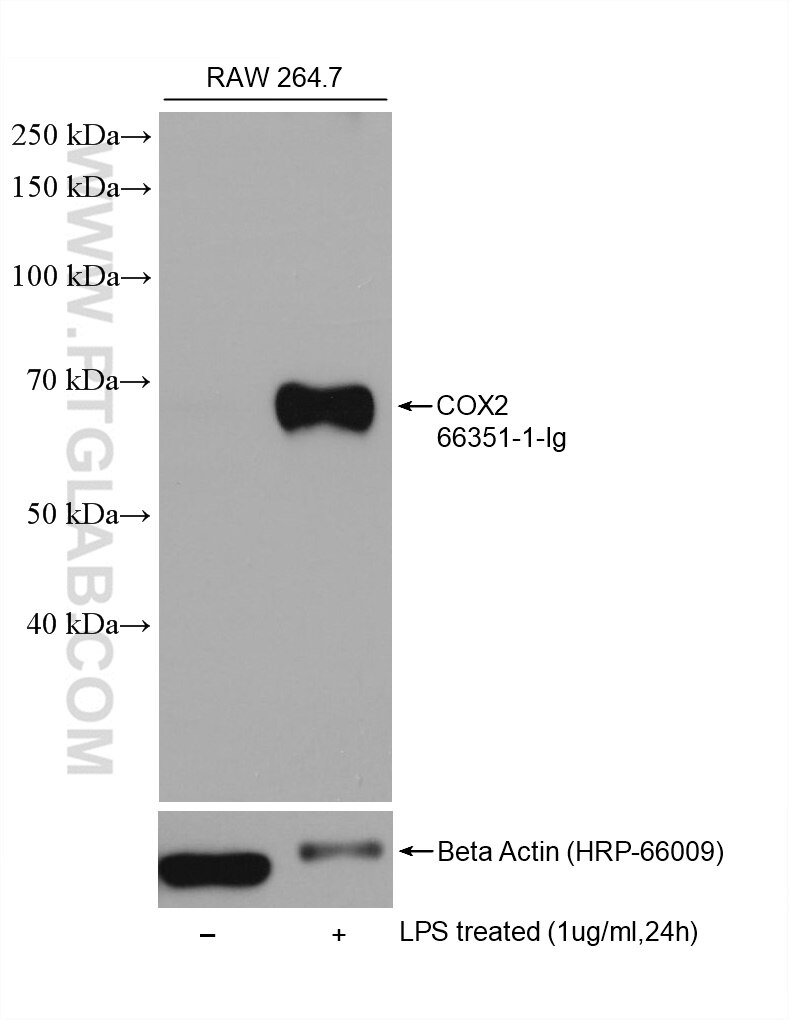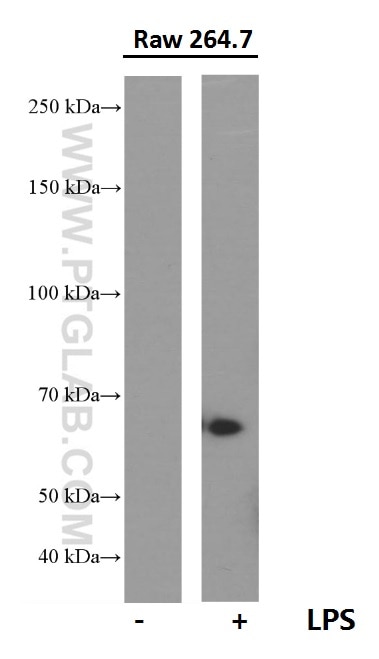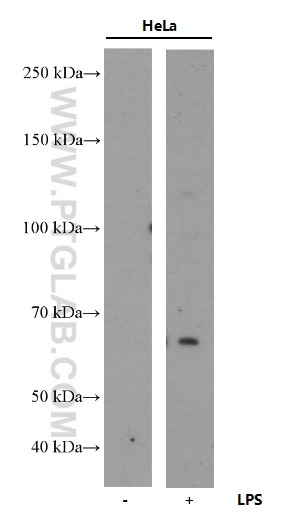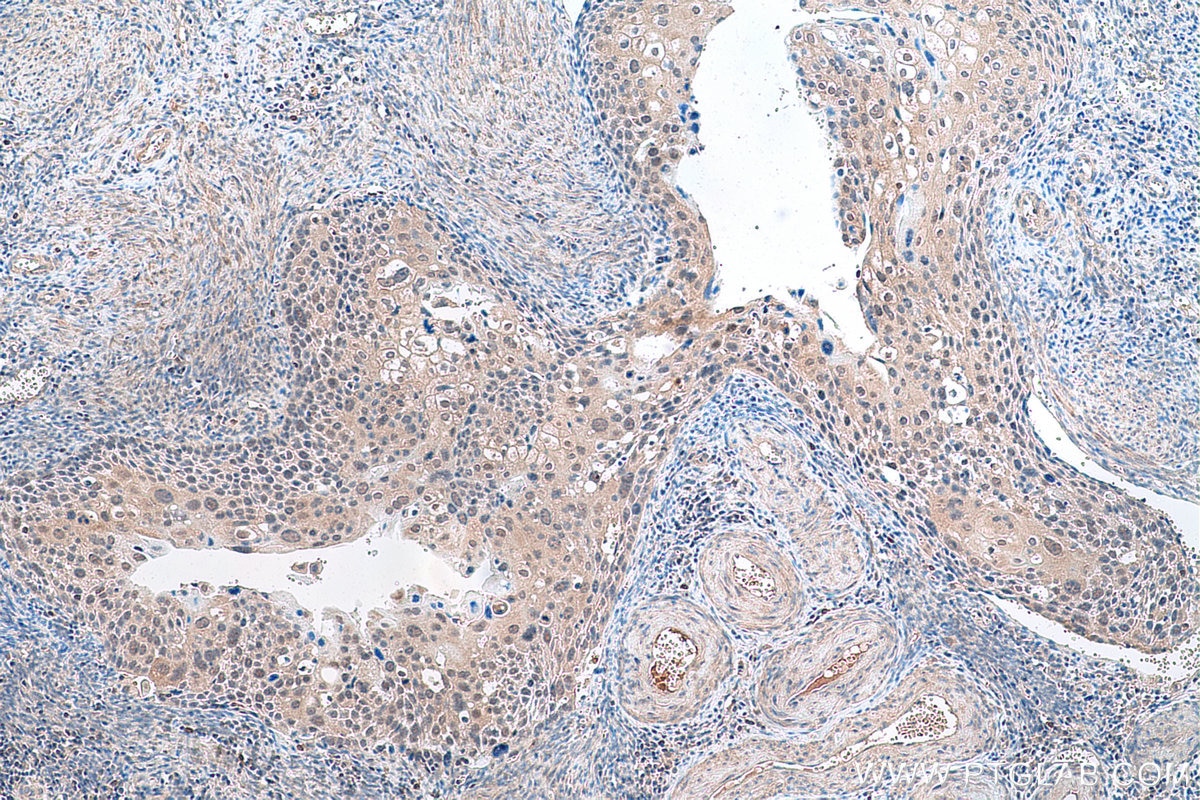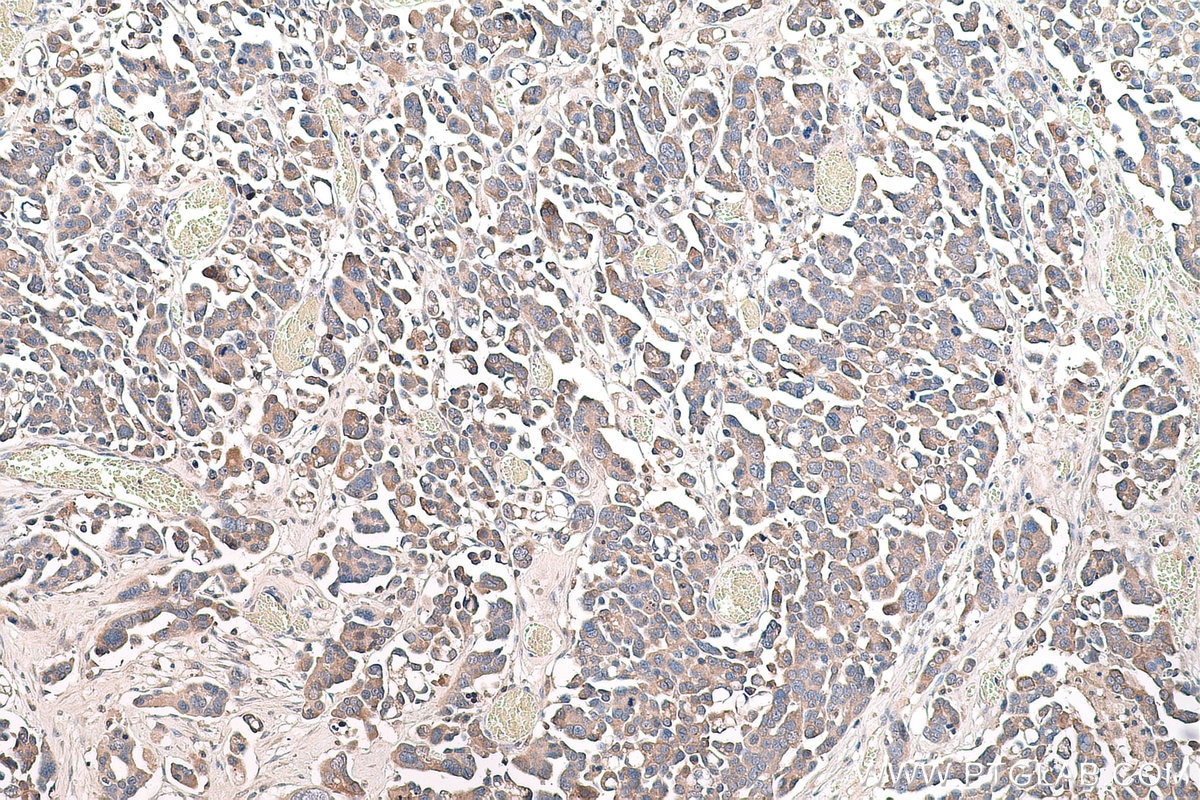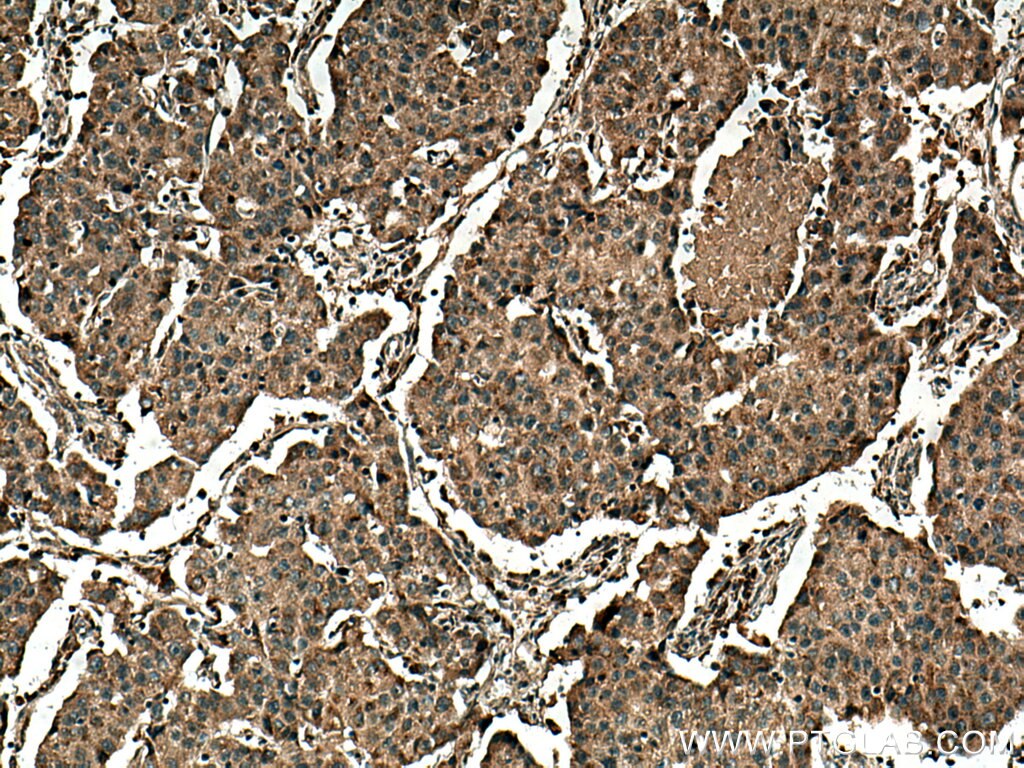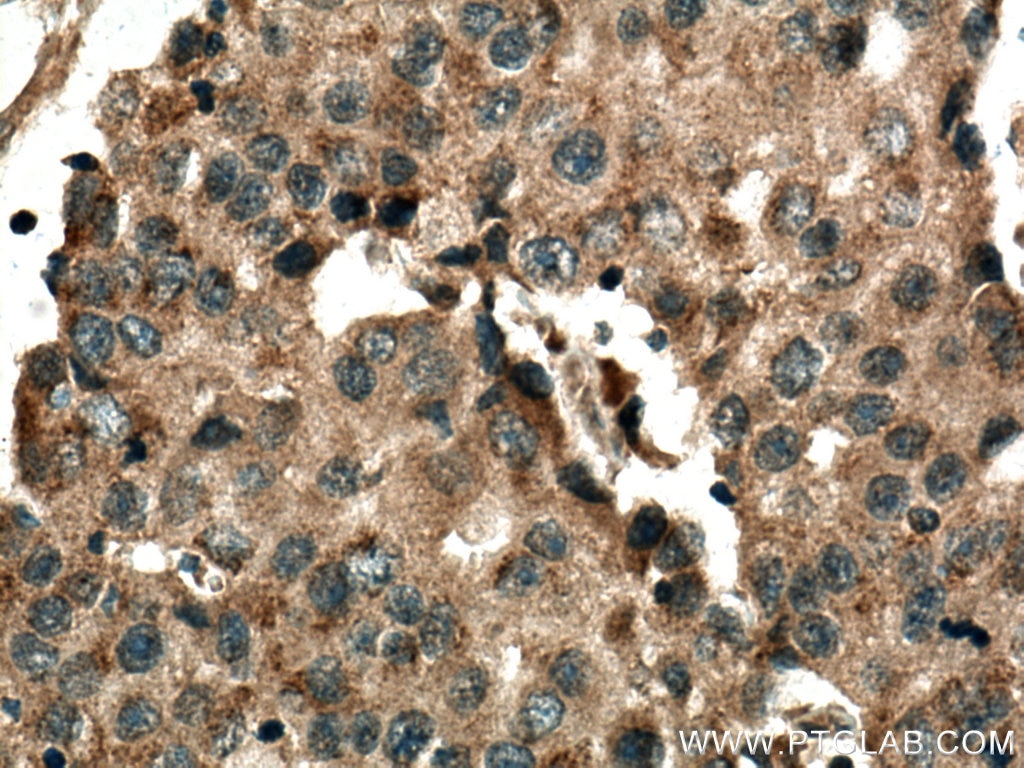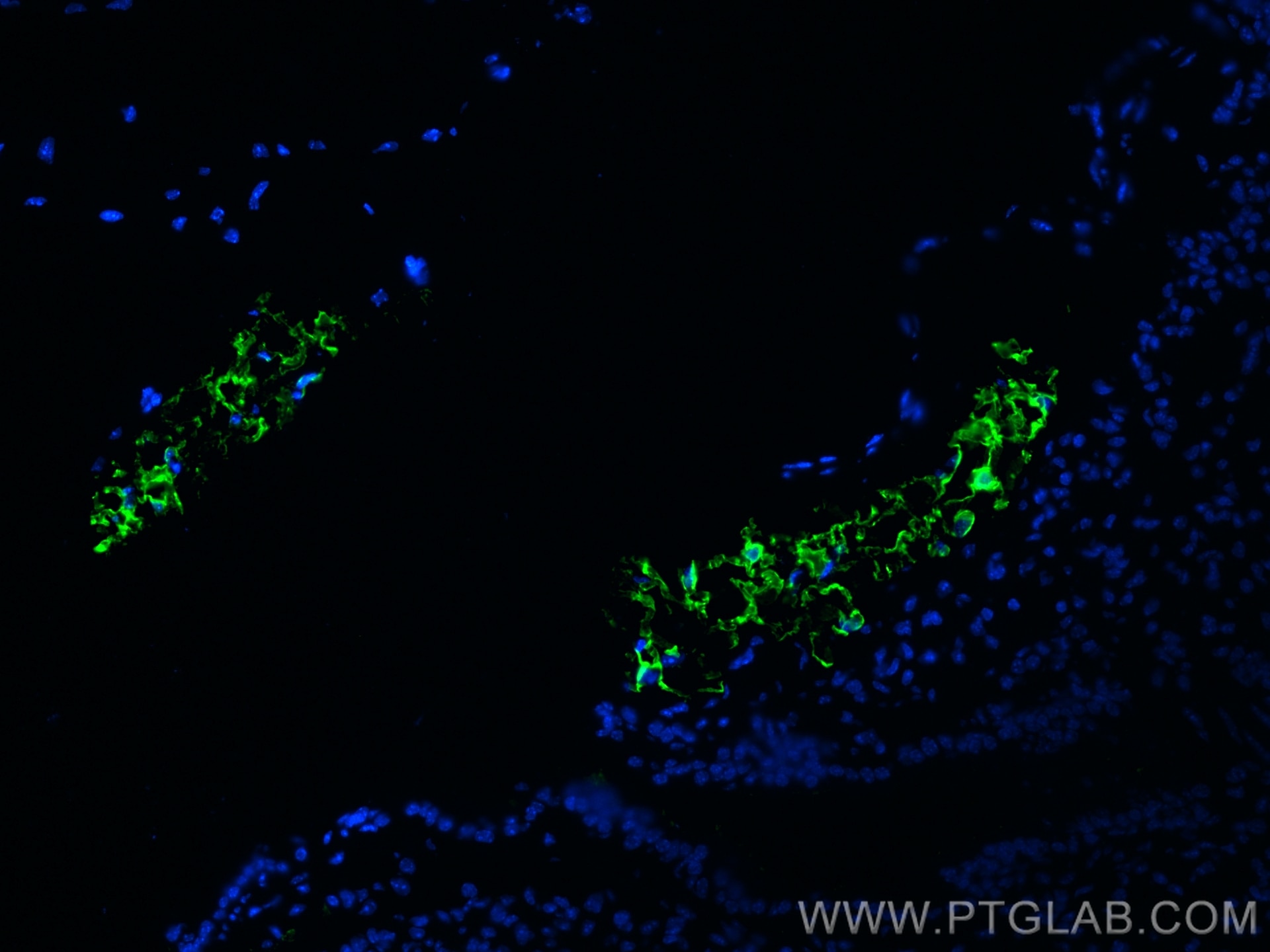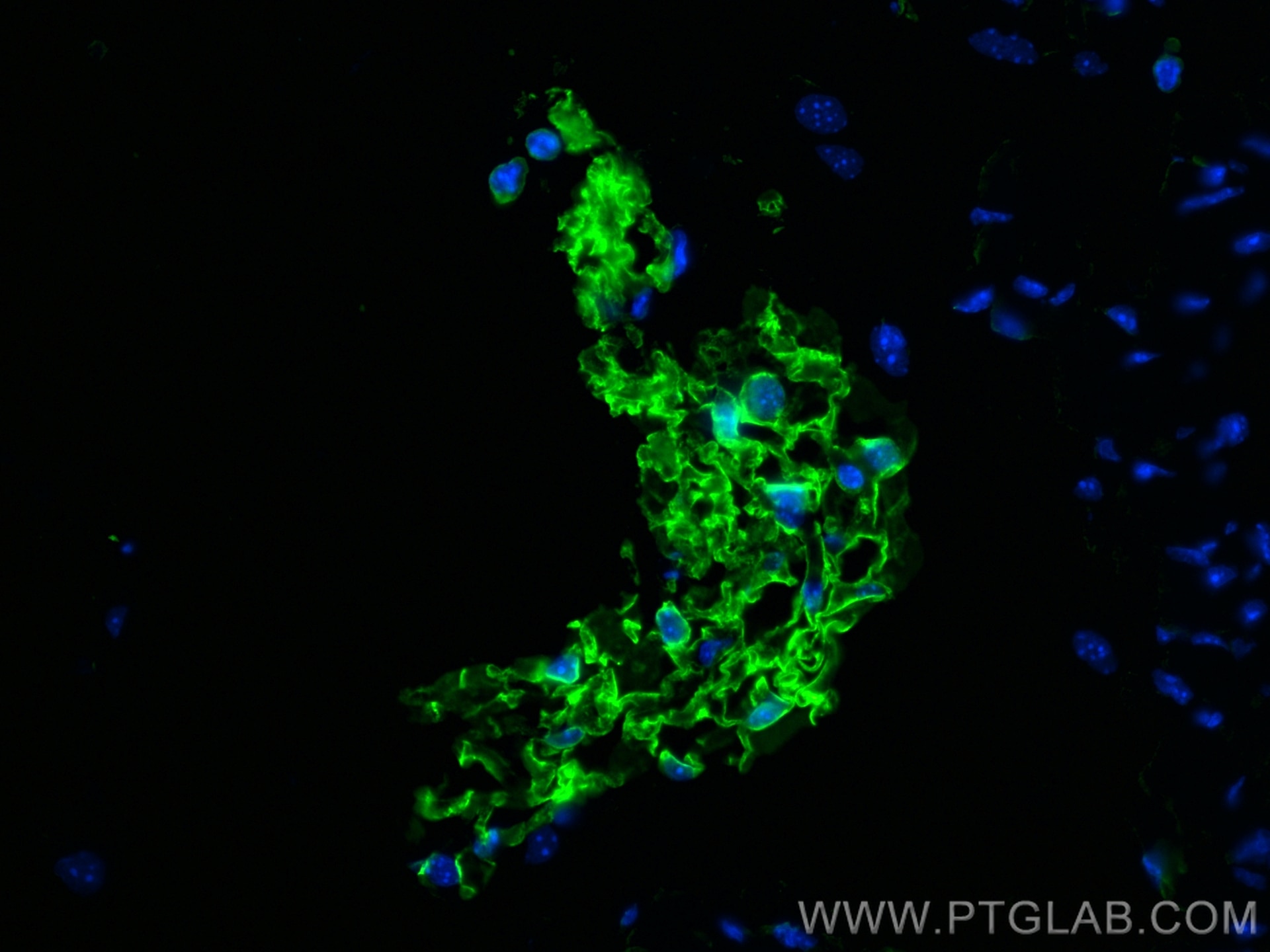- Featured Product
- KD/KO Validated
COX2/ Cyclooxygenase 2/ PTGS2 Monoklonaler Antikörper
COX2/ Cyclooxygenase 2/ PTGS2 Monoklonal Antikörper für WB, IHC, IF-P, ELISA
Wirt / Isotyp
Maus / IgG2a
Getestete Reaktivität
human, Maus
Anwendung
WB, IHC, IF-P, ELISA
Konjugation
Unkonjugiert
CloneNo.
3G2B9
Kat-Nr. : 66351-1-PBS
Synonyme
Geprüfte Anwendungen
Veröffentlichte Anwendungen
| WB | See 1 publications below |
Produktinformation
66351-1-PBS bindet in WB, IHC, IF-P, ELISA COX2/ Cyclooxygenase 2/ PTGS2 und zeigt Reaktivität mit human, Maus
| Getestete Reaktivität | human, Maus |
| In Publikationen genannte Reaktivität | Maus |
| Wirt / Isotyp | Maus / IgG2a |
| Klonalität | Monoklonal |
| Typ | Antikörper |
| Immunogen | COX2/ Cyclooxygenase 2/ PTGS2 fusion protein Ag24721 |
| Vollständiger Name | prostaglandin-endoperoxide synthase 2 (prostaglandin G/H synthase and cyclooxygenase) |
| Berechnetes Molekulargewicht | 604 aa, 68 kDa |
| Beobachtetes Molekulargewicht | 66-70 kDa |
| GenBank-Zugangsnummer | BC013734 |
| Gene symbol | COX2/PTGS2 |
| Gene ID (NCBI) | 5743 |
| Konjugation | Unkonjugiert |
| Form | Liquid |
| Reinigungsmethode | Protein-A-Reinigung |
| Lagerungspuffer | PBS only |
| Lagerungsbedingungen | Store at -80°C. 20ul Größen enthalten 0,1% BSA. |
Hintergrundinformationen
COX2 is an enzyme involved in the synthesis of prostaglandins from arachidonic acid.
1. What is the molecular weight of COX2?
The fully N-glycosylated PTGS2 is 72-74 kDa and the aglycosylated is 66 kDa (PMID:19656660). It also
expresses a band of 39 kDa after unspecific cleavage (PMID:17509125). The 50 kDa band of fragmented
PTGS2 has also previously been detected in AD brains (PMID:14724276).
2. Is COX2 post-translationally modified?
COX2 is a subject of post-translational modifications, including phosphorylation, glycosylation, and
s-nitrosylation (PMID: 28939645).
3. What is the difference between COX1, COX2, and COX3?
There are three isoenzymes that have cyclooxygenase activity: COX1, COX2, and COX3. While COX1
is a ubiquitously expressed constitutive enzyme, expression of COX2 is generally low but can be rapidly
induced by various stimuli (as part of infection and inflammatory response) and is controlled by the
transcription factor NFκB. COX3 is an alternative splice variant of COX1 enzyme and is considered
non-functional in humans.
4. I cannot detect COX2 in my sample during western blotting.
Unlike COX1, COX2 expression is inducible by a variety of stimuli including certain growth factors, cytokines,
and proinflammatory stimuli. COX2 basal expression levels may be very low in unstimulated cells. Additionally,
the COX2 half-life time is short and after stimulation, COX2 protein can be quickly degraded to basal levels
(PMID: 10966456), which should be taken into account during experimental design.
5. What is the role of COX2 in cancer?
COX2 is often upregulated in various cancer types and increased expression of COX2 is associated with
greater angiogenesis of solid tumors, increased invasion, and metastasis, as well as decreased host immunity.
6. What is subcellular localization of COX2?
Both COX1 and COX2 are present in the endoplasmic reticulum (ER) and nuclear envelope (PMID: 9545330),
but COX2 has been reported to be more enriched in the nuclear envelope compared to COX1 (PMID: 7738031).
